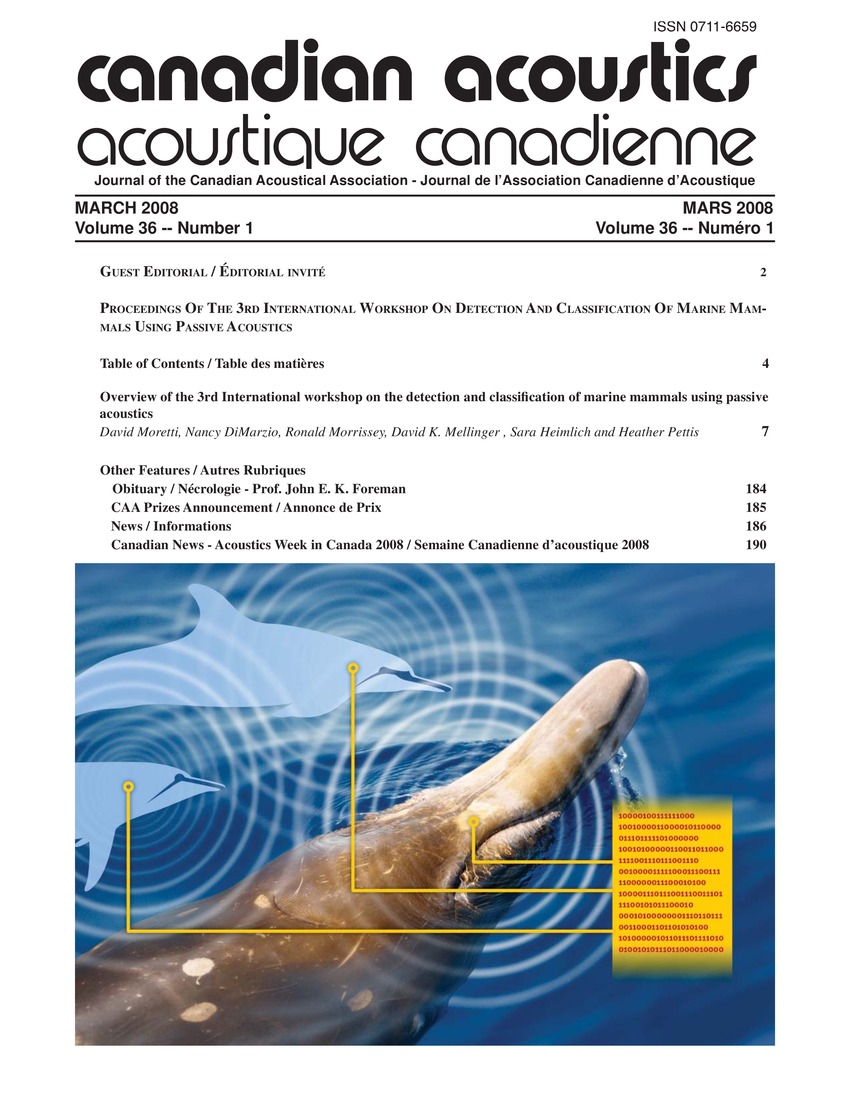Comparison of machine learning techniques for the classification of echolocation clicks from three species of odontocetes
Keywords:
Artificial intelligence, Classification (of information), Communication channels (information theory), Computer networks, Database systems, Dolphins (structures), Error analysis, Error detection, Face recognition, Image retrieval, Learning algorithms, Learning systems, Magnetostrictive devices, Time series analysis, Cepstral analysis, Echolocation clicks, Feature vectors, Odontocetes, Teager energy operatorAbstract
A species classifier is presented which decides whether or not short groups of clicks are produced by one or more individuals from the following species: Blainville's beaked whales, short-finned pilot whales, and Risso's dolphins. The system locates individual clicks using the Teager energy operator and then constructs feature vectors for these clicks using cepstral analysis. Two different types of detectors confirm or reject the presence of each species. Gaussian mixture models (GMMs) are used to model time series independent characteristics of the species feature vector distributions. Support vector machines (SVMs) are used to model the boundaries between each species' feature distribution and that of other species. Detection error tradeoff curves for all three species are shown with the following equal error rates: Blainville's beaked whales (GMM 3.32%/SVM 5.54%), pilot whales (GMM 16.18%/SVM 15.00%), and Risso's dolphins (GMM 0.03%/SVM 0.70%).Additional Files
Published
How to Cite
Issue
Section
License
Author Licensing Addendum
This Licensing Addendum ("Addendum") is entered into between the undersigned Author(s) and Canadian Acoustics journal published by the Canadian Acoustical Association (hereinafter referred to as the "Publisher"). The Author(s) and the Publisher agree as follows:
-
Retained Rights: The Author(s) retain(s) the following rights:
- The right to reproduce, distribute, and publicly display the Work on the Author's personal website or the website of the Author's institution.
- The right to use the Work in the Author's teaching activities and presentations.
- The right to include the Work in a compilation for the Author's personal use, not for sale.
-
Grant of License: The Author(s) grant(s) to the Publisher a worldwide exclusive license to publish, reproduce, distribute, and display the Work in Canadian Acoustics and any other formats and media deemed appropriate by the Publisher.
-
Attribution: The Publisher agrees to include proper attribution to the Author(s) in all publications and reproductions of the Work.
-
No Conflict: This Addendum is intended to be in harmony with, and not in conflict with, the terms and conditions of the original agreement entered into between the Author(s) and the Publisher.
-
Copyright Clause: Copyright on articles is held by the Author(s). The corresponding Author has the right to grant on behalf of all Authors and does grant on behalf of all Authors, a worldwide exclusive license to the Publisher and its licensees in perpetuity, in all forms, formats, and media (whether known now or created in the future), including but not limited to the rights to publish, reproduce, distribute, display, store, translate, create adaptations, reprints, include within collections, and create summaries, extracts, and/or abstracts of the Contribution.


